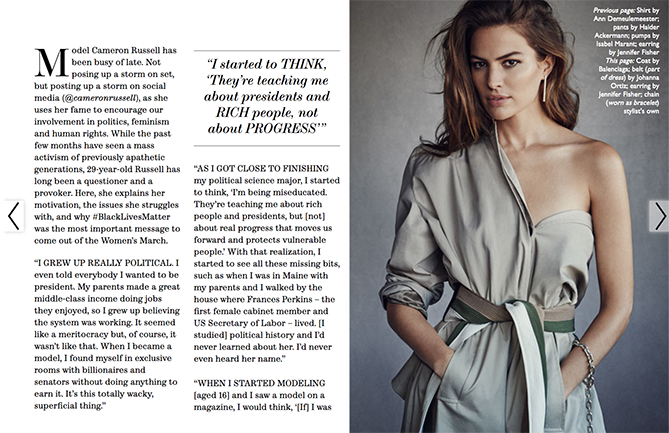
Remember the good old days of catalog shopping? A simpler time when you could flip through pages of a glossy magazine, ogling at advertisements that captured your attention, drew you in, and immediately transformed you into an interested customer.
A lot has changed for brands since those nostalgic times. Thanks to social media and content inundation, brands are having difficulty bridging the gap between browsing and buying. How can you turn engagement into actual conversions?
Have you ever browsed a blog, social media feed, or other digital publication and instantly discovered a product you love? Did you spend the time scanning the website or search engines trying to find it? Probably not.
Retailers have often relied on visual content to capture the attention of consumers. However, the abundance of branded content has made it increasingly difficult to encourage actual purchasing -- making the pathway to conversion more crucial than ever.
What Is Shoppable Content?
Shoppable content is a form of visual commerce in which marketers use compelling imagery (often formulated in a storytelling format) with actionable purchase points or product recommendations, streamlining the conversion path from browsing to purchase.
Interactive and shoppable content are now necessary assets for digital retailers. Convenience and a subpar return policy are no longer enough to capture new audiences and encourage customer loyalty. In fact, according to a recent shoppable content report, 33 percent of retailers stated that the improvement of customer’s digital experience was a top three priority in 2017.
ECommerce brands championing this new form of social and content marketing are breaking down the traditional constructs of digital shopping. Their websites and marketing channels have transformed into experiences that are an inventive step beyond the dull and dated eCommerce environment.
If you’re one of the 33% looking to improve customer experiences this year, take a look at the brands doing it best.
5 Examples of Creative Shoppable Content
1) Visual Storytelling with Scotch & Soda

Traditionally, lookbooks were an industry insider tool. They were used to attract coverage from press and to showcase new products to potential retail buyers.
Over the years, lookbooks have transformed into public-facing marketing assets used to convey the inspiration of a collection, and to breathe life into the products being sold.
Dutch clothing retailer Scotch & Soda fully captures the creative inspiration behind the Spring/Summer 2017 collection in their latest shoppable lookbook experience. The exotic scenery conveys the story behind the product. A story of creative discovery found in nature -- specifically the rainforest.
Someone who browses a lookbook will spend around twice as much as the average app shopper, and also browse twice as long. The interactive design elements provide an engaging experience that drives sales and increases time on site -- while the content communicates authenticity and the brand’s identity.
2) All Saints User-Generated Content

User-generated content (UGC) is arguably the content marketing trend of 2017. It infuses personality into products by transforming them from objects into relatable lifestyles. The use of UGC on a website or in a campaign increases conversion by 29%, making it an essential asset for sales and customer engagement.
Social media has inspired us to be fascinated with the lives of others, and UGC capitalizes on this trend. By incorporating visual content from actual customers, All Saints successfully alleviates the pressure of purchasing with an experience similar to that of scrolling through a social media feed.
The images act as a product endorsement from other satisfied customers, and the shoppable elements make it easier to discover the product information necessary to make a purchasing decision.
3) Net-a-Porter Shoppable Editorials

Fashion lovers and lifestyle brand enthusiasts have always had an immense love for magazines. Nobody knows this better than Net-a-Porter, which was established on the foundation of exceptional content.
The digital publication and luxury eCommerce retailer has continued to attract customers with insider interviews, seasonal trend reports, and style edits -- similar to the content traditionally produced by lifestyle magazines.
The company’s success was built on the largest flaw of lifestyle publications: shoppability and product discovery. Print publications left readers on a wild goose chase when they discovered products in editorials. Net-a-Porter capitalized on this frustration by adding the ability to shop directly within online content.
4) Shoppable Videos from Kate Spade

Shoppable video has become a hot topic in recent years. With video marketing undeniably on the rise, allowing users to shop products directly from videos is an obvious progression to bridge the gap from viewer to customer.
However, the popularity of inserting shoppable product tags in videos highlighted a critical issue: viewers of shoppable videos weren’t completing as many purchases because checking out would interrupt the viewing experience.
Clothing and accessories label Kate Spade realized this early on. For their 2016 holiday video campaign -- featuring Anna Kendrick -- the label tried something new. They eliminated the friction of exiting a video when shoppable elements were clicked, trading it for a feature that compiled the list of products into a cart viewed at the end of the video.
Instead of ruining the viewing experience for interested consumers, the brand tailored their marketing efforts and technologies to their needs.
5) Shoppable Images on Crate & Barrel's Blog

Crate & Barrel’s blog is a haven for DIY lovers and food enthusiasts. The brand regularly partners with social media influencers across many beats to amplify their reach. This strategy ensures that they consistently provide quality and authentic content their target audience will love.
Everyone knows that content is king. However, many retailers have struggled with converting blog readers into buyers. Crate & Barrel makes it easier for website visitors to purchase the items featured in posts by adding shoppable product tags into images that feature the brand’s products. Pairing shoppable content with how-to guides allows the brand to leverage moments when readers have the highest intent to purchase.
Closing the Gap Between Engagement and Purchase
Traditional content marketing efforts no longer suffice when attracting and engaging customers. Brands and retailers must lessen the friction between content and their products.
These brands have perfected the art of using shoppable content to engage new audiences, convert more customers, and increase discovery. Use these examples to guide you on your journey for the ultimate customer engagement strategy.
Would you ever consider using shoppable content on your website? Share your take in the comments.

No comments:
Post a Comment